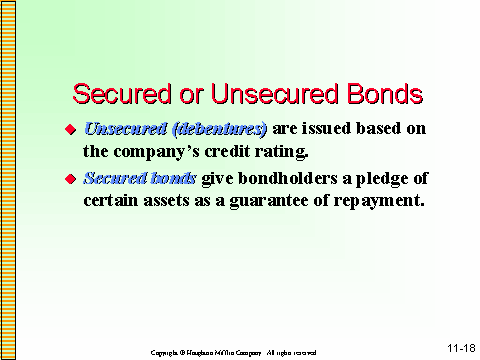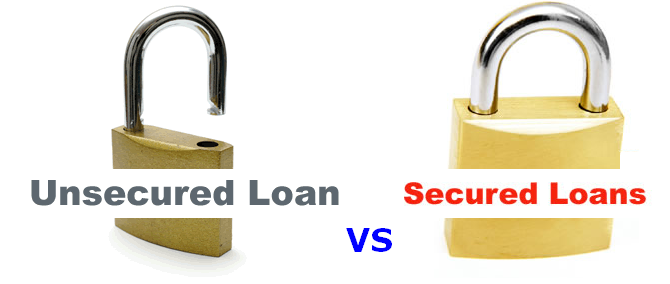Secured vs Unsecured Bonds
Post on: 7 Апрель, 2015 No Comment

You can opt-out at any time.
Please refer to our privacy policy for contact information.
Bonds, which represent the seller’s pledge to make interest payments and repay principal to the buyer, can be either “secured” or “unsecured.”
Secured bonds are those that are collateralized by an asset – for instance, property, equipment (usually in the case of airlines, railroads, trucking companies, and the like), or an income stream. This means that in the event that the issuer “defaults ” – or fails to make interest and principal payments – the investors have a claim on the issuer’s assets that will enable them to get their money back.
Typically, secured bonds are issued by corporations and municipalities. Keep in mind, though, that the majority of corporate bonds are unsecured. In the case of municipals, unsecured bonds are often referred to as general obligation bonds. since they are backed by the municipality’s broad taxing power. In contrast, “revenue” bonds are those backed by the revenue expected to be generated by a specific project, and are therefore considered to be secured.
Unsecured bonds. which are also called “debentures,” are not secured by a specific asset, but rather the full faith and credit of the issuer. In other words, the investor has only the issuer’s promise to repay but no claim on specific collateral.

This doesn’t necessarily have to be a bad thing: keep in mind that U.S. Treasuries — generally regarded as the lowest risk investment in the world when it comes to the possibility of default, represent unsecured debt.
Owners of unsecured do have a claim on the assets of the defaulted issuer, but only after investors whose securities are higher in the “capital structure” are paid first. Debt this is lower in the capital structure is said to be “subordinated,” or junior, relative to those higher in the structure. As a result, unsecured debt is “junior” compared to secured debt.
Risk and Return Characteristics
Since securing a bond with assets or revenues ensures that the issuer will be able to pay its obligations, the potential impact of a default is much lower than it is with unsecured debt. As a result, such bonds are seen as being lower risk. However, this lower risk also equates to a lower yield, since risk and yield go hand-in-hand in the financial markets. Unsecured bonds, in contrast, are seen as having higher credit risk. and as a result they generally offer higher yields than their secured counterparts (all else equal). Money managers typically can in invest in both groups in order to find securities with the optimal combination of risk and return potential.














